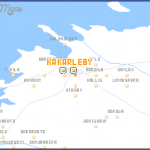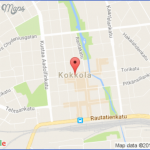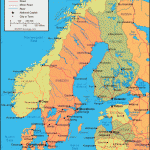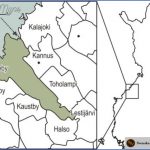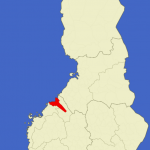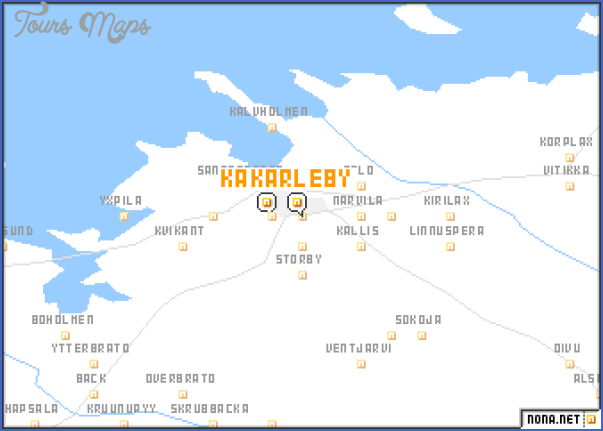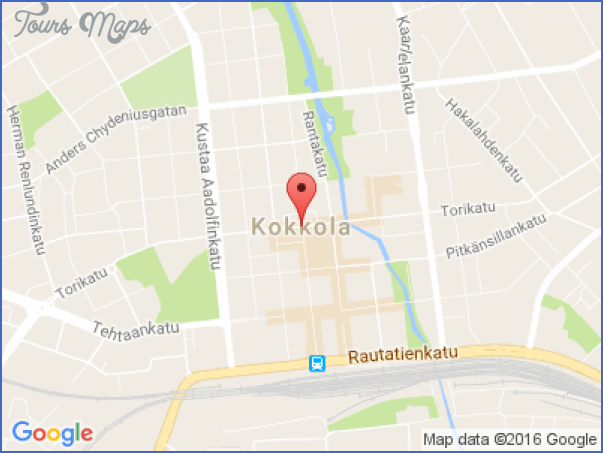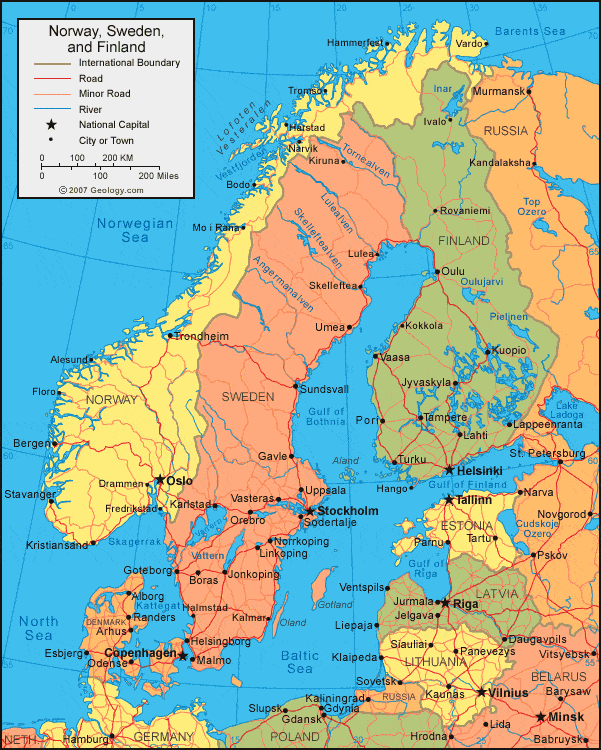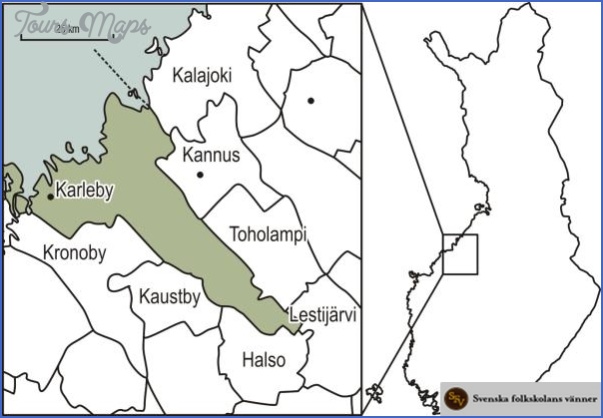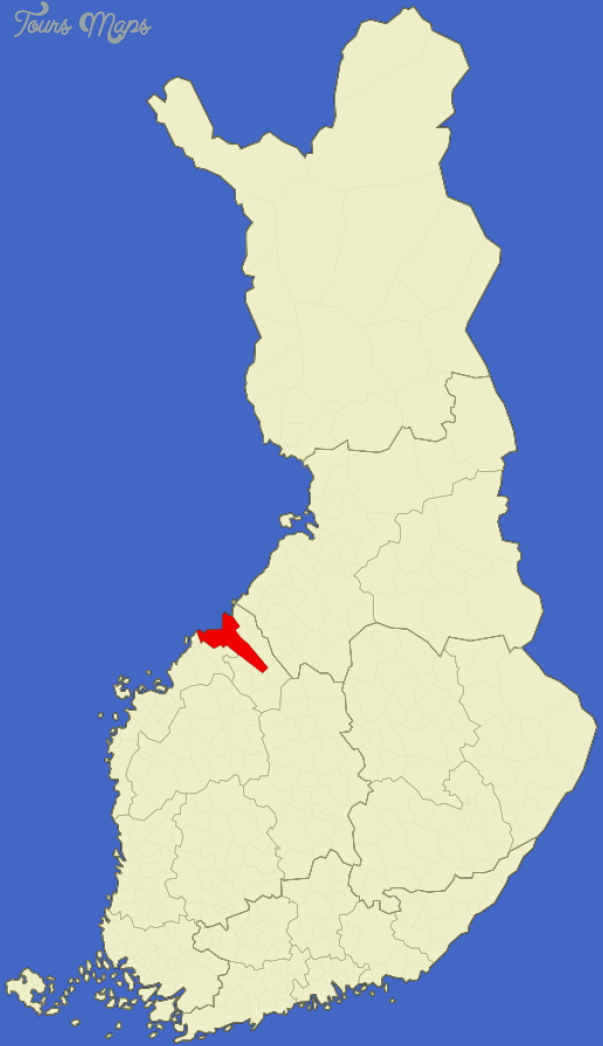Province: Vaasan laani (Vasa IanVaasa).
Altitude: sea level. Population: 33,000.
Postal code: SF-67100. Telephone code: 9 68.
HOTELS. Vaakuna, Rantakatu 16,150 SP; Grand Hotel, Pitkansillankatu 20B, 150 Milton, Rau-tatiekatu 6, 85 Seurahuone, Torikatu 24, 75 b. YOUTH HOSTEL Two CAMP SITES.
EVENTS. Folk Music Festival at Kaustinen, 40 km (25 miles) SE (July); Venetian Weekend, with theatre performances, concerts, exhibitions, etc. (August).
Kokkola, one of the oldest towns in Finland (founded 1620), was almost entirely Swedish-speaking until the 20th c. It was known then as Gamlakarleby. With the development of industry, however, the language boundary was obliterated and Finnish came increasingly into use. Originally located on the sea, the town is now 5 km (3 miles) inland, as a result of the rise in the level of the coast. The harbour is the deepest on the W coast of Finland.
HISTORY. The town was founded by Per Brahe in 1620 at the behest of King Gustav II Adolf (Gustavus Adolphus). Its favourable location for communications made it a prime focus of commerce and shipping between 1750 and 1860. Kokkola lost much of its merchant shipping fleet during the Crimean War (1854-6).
SIGHTS. In Mannerheim Square (Man-nerheiminaukio) is the Town Hall (Engel, 1845). The church was built in 1960. The Renlund Historical Museum, in a wooden house (1696), contains material on the history of the town and a collection of ship models. The Renlund Art Gallery has works by Finnish artists. On the banks of the Kaupunginsalmi, the English Park (Englantilainen Puisto) commemorates an unsuccessful attack by British forces in 1854, during the Crimean War. A captured British longboat is displayed in the park. The old town has preserved much of its original character.
SURROUNDINGS. The area S of Kokkola abounds in historical memories, not only for Finland, but for the entire kingdom of Sweden and Finland, torn apart by Tsar Alexander I’s victorious campaign in 1808-9.
The best route S is the road via Oja and Risdhall. The road, which runs over islands and around inlets of the sea, has beautiful views of the Gulf of Bothnia. In 40 km (25 miles) it comes to Jakobstad (Pool Hotel, 100 SP; Kaupunginhotelli, 120 youth hostel; camp site), a town of 20,000 inhabitants. Jakobstad was founded in 1653 by Ebba Brahe, widow of the military leader Count Jacob de la Gardie. The area around the commune of Pedersore, on which the town now stands, was a fief of the de la Gardie family; Queen Christina of Sweden took back the fief but granted Marshal de la Gardie the right to found a town. After his death, Ebba Brahe, whose youngest brother, Per Brahe, had founded Gamlakarleby and Nykarleby, carried the project through and named the new town after her late husband. Jakobstad is overwhelmingly Swedish-speaking. Its Finnish name is Pietarsaari, which is derived from the original name of the commune, Pedersore. In Jakobstad is the oldest tobacco factory in Scandinavia, Strengberg Oy, with a Tobacco Museum. J. L. Runeberg (1804-74), one of the leading Swedish-language poets of the 19th c. was born in the town. His best known work is the Songs of Ensign Stal, a glorification of the Swedish-Finnish resistance to the Russian invasion of 1808-9. Since the war was waged under Swedish command Finland providing the soldiers and NCOs, Sweden the officers the work is also a reflection of Swedish attitudes.
The church in Pedersore was probably founded in the 14th c. and was built in stone on a rectangular plan. It became the model for the wooden churches with pointed spires erected in northern and eastern Finland during the 17th c. In 1787-95, however, it was rebuilt on a cruciform plan by Jacob Rijf. The School Park in Jakobstad occupies the site on which, 200 years ago, the Strengberg family tried to grow tobacco in greenhouses. A similar readiness to try something new can be seen in the fact that the park today contains more than 1000 different species of plants.
10 km (6 miles) from the middle of the town is the sandy beach of Faboda.
20 km (12 miles) S of Jakobstad is Nykarleby, founded in 1620, where Per Brahe established the first secondary school in Osterbotten (1640). The little town is still overwhelmingly Swedish-speaking; its Finnish name, Uusikaarep, is a translation of its Swedish one. It was the birthplace (1818) of Zachris Topelius, who, after Runeberg, was the most important 19th c. Finnish poet writing in the Swedish language. General von Dobeln defeated the Russian army near Nykarleby during the Swedish- Russian war of 1808-9.
Kokkola Gamlakarleby Finland Map Photo Gallery
Maybe You Like Them Too
- The Best Cities To Visit in The World
- World’s 10 Best Places To Visit
- Coolest Countries in the World to Visit
- Travel to Santorini, Greece
- Map of Barbados – Holiday in Barbados

